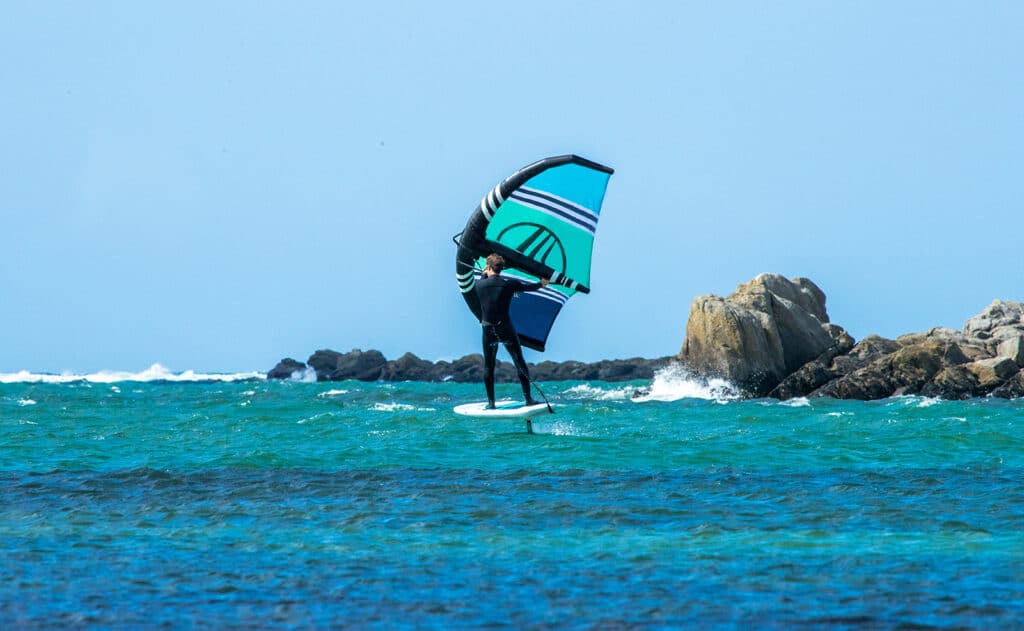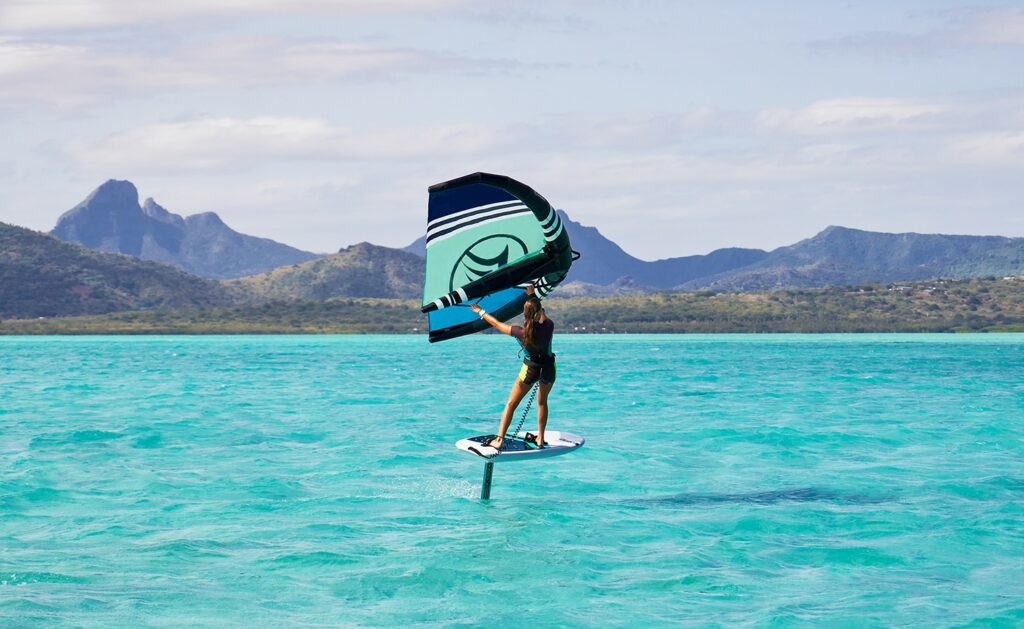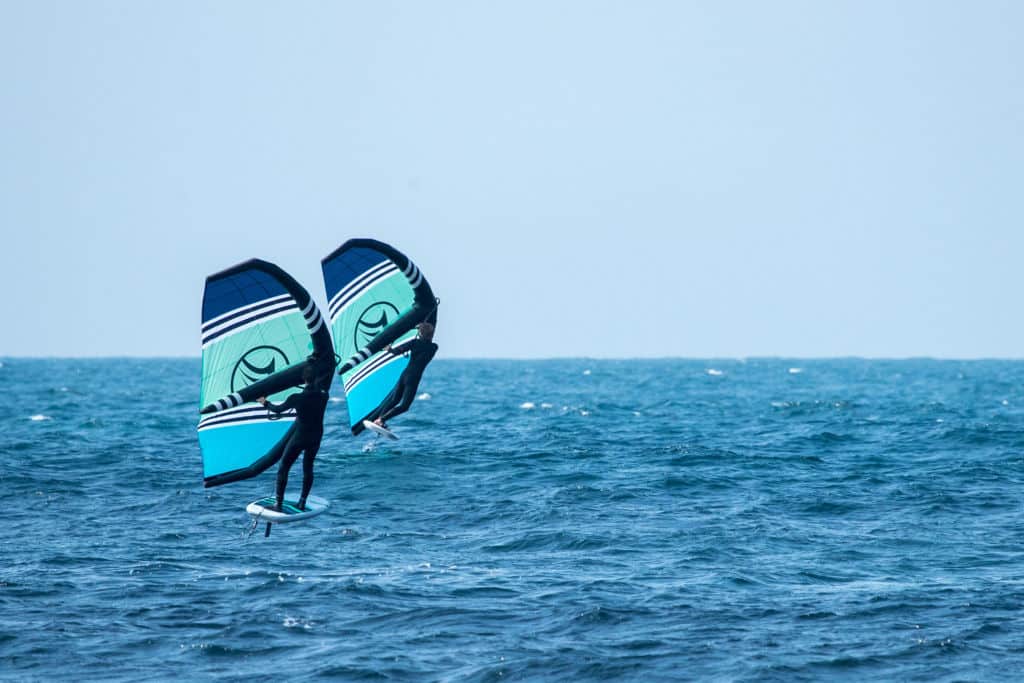The spot and the conditions to start in Wing Foil
To get started in Wing Foil, the equipment is not the only parameter to take into account. It is also necessary to know the spot and the conditions to start in Wing. Mastery and knowledge of the marine conditions, the weather or the body of water according to your equipment will ensure optimal progress (and will prevent you from many falls!). Here we give you all our advice on how to choose the right place and time to sail. Be aware that before you start, it is important to understand how a foil works, or to know the basics of WingFoil.
Click on the previous links to have all the keys in hand before your session.
What are the ideal spots and conditions to start Wing Foiling?
The body of water
It should be flat and sheltered from the swell. The most interesting spots to start in the Wing are the lakes, but if you live on the coast, a spot at the bottom of a bay or harbour may be adequate. In addition, a closed place is safer, especially if you go too far from the shore, it will always be possible to reach the other bank and return by land. At sea, the wind can quickly turn, increase or drop. Not being too far from the coast when starting out is essential.
In any case, this body of water should be calm and clear. Beware of algae that could get caught in the foil, as well as floating objects (buoys etc.) present. Choose a place where there are few practitioners so that you can focus more on your progress, and less on what is happening around you.

Don’t forget to have enough bottom under your board (oWe sometimes tend to forget that we have a foil!). We recommend a depth of at least 30 cm more than the size of your mast. In other words, if you have an 80 cm mast, the bottom must be at least 1m10.
However, stay in an accessible area (less than 500 m), in case you are unable to get back to your board upright. Finally, do Beware of current effects caused by tides or swells.
WIND CONDITIONS

The most suitable wind conditions to start with are around 15 knots (to allow you to gain a little speed and get the foil off the ground). Ideally, the wind should be steady.
Avoid (or even forget) an outing in an onshore wind, which could take you out to sea. Indeed, it will be difficult for you to go upwind at first, and even more so to return when you are far from the shore.
Sea winds are not the easiest : They push you towards the edge of the beach, and risk making you quickly touch the sand with your foil. In addition, theThe sea wind pushes the water harder and creates swell, which can further throw you off balance.
It will therefore be more difficult for you to get on the board (because of the waves) and you will be very quickly driven back to the beach (because of the sea wind). Which in turn, will reduce your practice time as you will soon find yourself close to the edge.
Ideally, the wind is sideshore. If you are sailing at sea, it should ideally be light with little chop.
We recommend that you do not venture to spots that have been studied and spotted beforehand. Since marine weather is changeable and unpredictable, it is essential to stay relatively
close to the coast
to be able to return easily and quickly if the wind turns, strengthens or drops completely.
SEASONALITY

Depending on your location, avoid starting during busy periods (usually summer), when the spots are overcrowded. Stay away from swimming areas and other water sports enthusiasts. One of the advantages of this sport is that it allows you to quickly move away from the open sea by swimming on your board. Make sure you are downwind that there is no one around when you are sailing. (To do this, raise the wing above your head to observe the water).
Safety rules

is a board sport that presents risks, just like Kitesurfing, Windsurfing or other disciplines with foil. Therefore, here are some safety rules to keep in mind:
- Equip yourself with protection : board leash and wing leash (mandatory), flotation vest or impact jacket (mandatory beyond the 300m zone), helmet (strongly recommended).
- Avoid going alone during your session, and don’t leave at nightfall in winter.
- Always let someone know when you’re going out and when you’re going.
- Be patient and don’t venture into the big waves until you’re up to the level.
- Sometimes it’s better to give up than to accumulate mistakes that will turn into a big problem later on.
FIND ALL OUR TIPS FOR:
If you still have questions about this, or for any other request, please do not hesitate to contact us !

